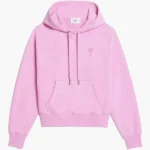Whether you’re a professional embroiderer or a creative hobbyist, choosing the right file format for your embroidery machine is essential. Not all embroidery file formats are the same, and using the wrong one can lead to stitching issues, design errors, or wasted materials.
In this guide, we’ll break down the embroidery file format used in the industry, which machines they’re compatible with, and how to convert your designs into the perfect stitch-ready format.
Let’s get into it!
What Are Embroidery File Formats?
Embroidery file formats are specialized digital files that tell your embroidery machine how to stitch your design. Unlike graphic formats (like JPG or PNG), embroidery files contain:
- Stitch coordinates
- Thread colors
- Stitch types (satin, fill, running, etc.)
- Machine commands (like trims, jumps, and stops)
These formats vary by machine brand, so it’s crucial to know which format your machine uses before uploading a design.
Top Embroidery File Formats by Machine Brand
Here’s a quick overview of the most commonly used embroidery file formats and which brands use them:
| File Format | Used By | Details |
| PES | Brother, Babylock | One of the most widely used formats—perfect for home users. |
| DST | Tajima, Industrial Machines | Standard commercial format—compact and efficient. |
| JEF | Janome | Native format for Janome embroidery machines. |
| EXP | Bernina, Melco | Used for Bernina embroidery software and machines. |
| VP3 | Husqvarna Viking, Pfaff | High-quality format with thread color data. |
| XXX | Singer | Used in Singer’s Futura embroidery machines. |
| HUS | Husqvarna Viking | Older format still supported by many machines. |
Image Files vs. Embroidery Files
You might start with an image file like a PNG, JPG, SVG, or even AI (Adobe Illustrator). However, embroidery machines can’t read those formats directly.
You’ll need to convert your logo or image into a machine-readable format like PES, DST, or JEF. This process is called embroidery digitizing—and it’s much more than a simple file conversion. It requires skill, experience, and specialized software.
Want to Convert an Image to PES or DST?
Check out Digitizing Buddy — a trusted service offering:
- Expert embroidery digitizing
- Fast delivery (often same-day!)
- All formats available: PES, DST, JEF, VP3, EXP, and more
- Affordable pricing with unlimited revisions
Whether you need to convert an image to PES file or prep your brand logo for embroidery, they’ve got your back.
In-Depth Look at Popular Embroidery Formats
1. PES – Brother & Babylock
- One of the most beginner-friendly formats.
- Supports advanced stitching data, colors, and multiple thread layers.
- Ideal for home embroidery machines and digitizing software like PE-Design.
2. DST – Tajima & Industrial
- A universal commercial format.
- Doesn’t include thread color info, but widely accepted.
- Extremely stable—great for multi-head and high-speed machines.
3. JEF – Janome
- Native to Janome embroidery machines.
- Includes hoop position info, color data, and stitch commands.
- Works seamlessly with Janome’s Digitizer MBX software.
4. EXP – Bernina & Melco
- Compact format often used in Bernina embroidery software.
- Simple structure—fast loading and stitching.
- Paired with INF files to store thread colors.
5. VP3 – Husqvarna Viking & Pfaff
- Supports thread color, design layers, and object info.
- Ideal for advanced editing and customization.
- Developed by VSM Group for newer embroidery models.
How to Convert Between Embroidery File Formats
You can use the following options:
Professional Digitizing Services
- Fast, accurate, and human-verified.
- Recommended for logos and complex artwork.
- Services like Digitizing Buddy can convert logos to PES, DST, and more.
Embroidery Software
If you have access to software like:
- Wilcom
- Embird
- Hatch Embroidery
- SewArt
You can manually open a file and save it in another format. Be careful—automated conversion may cause stitch errors if the design wasn’t originally digitized for embroidery.
Choosing the Right Format for Your Machine
Here’s a cheat sheet to help you pick the best format:
| Machine Brand | Recommended Format(s) |
| Brother | PES |
| Babylock | PES |
| Janome | JEF |
| Bernina | EXP (plus .INF) |
| Tajima (Industrial) | DST |
| Singer | XXX |
| Husqvarna Viking | VP3, HUS |
| Pfaff | VP3 |
| Melco | EXP |
If your machine supports multiple formats, always use the native format first to ensure smooth operation and stitch accuracy.
Common Mistakes to Avoid
- Uploading PNG or JPG files directly to your machine – they won’t work!
- Using auto-conversion software for complex logos – this often leads to bad stitchouts.
- Choosing the wrong hoop size – may cut off parts of your design.
- Ignoring file format details – some formats don’t store color or stitch type info.
Pro Tips for Embroidery File Success
- Always test your design on scrap fabric before full production.
- Resize cautiously – resizing stitch files without re-digitizing can ruin the density.
- Know your stabilizer and fabric type – different fabrics need different stitch settings.
- Keep backups – save both your working and stitch-ready files.
Final Thoughts
Understanding embroidery file formats is the first step to stitching beautiful designs. Whether you’re creating branded merch, personalizing gifts, or starting your own embroidery business, knowing what file your machine needs (and how to get it) can save you time, money, and frustration.















Leave a comment